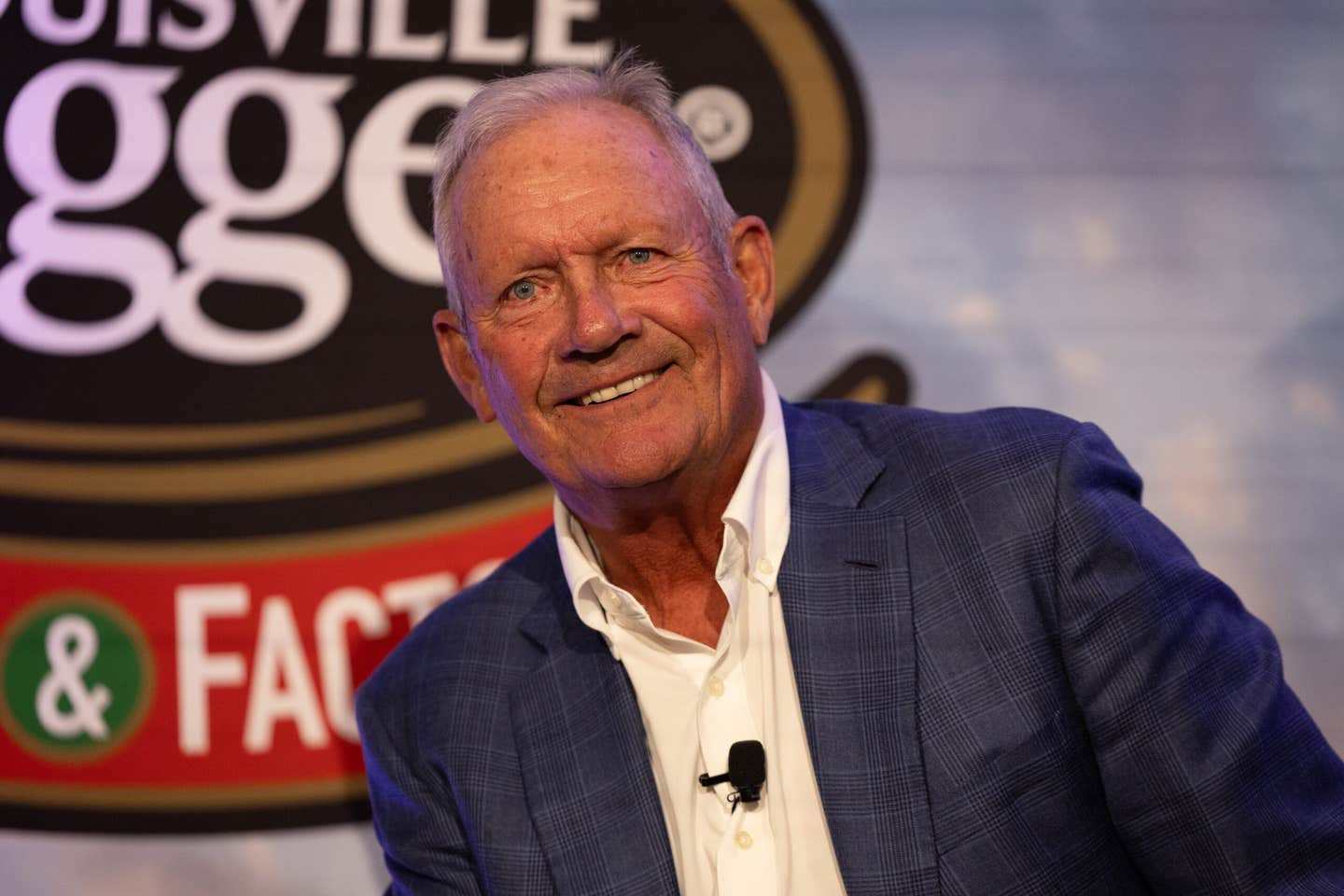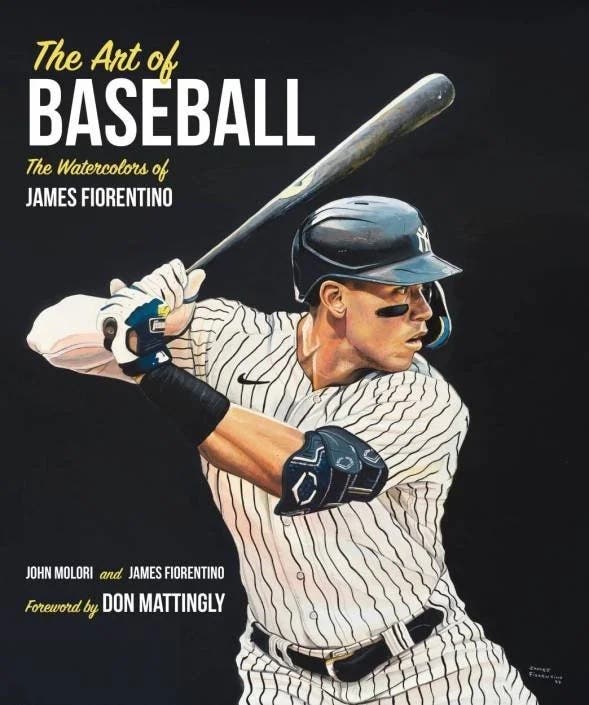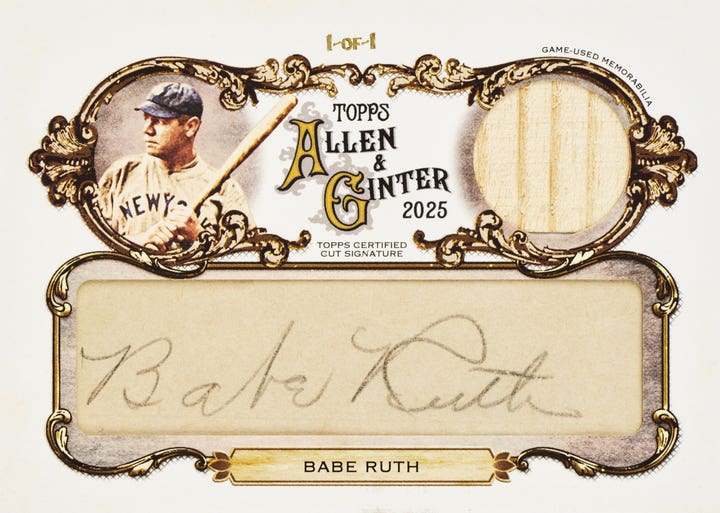Autographs
Often criticized and critiqued, baseball umpires once had their own trading cards
“It’s not been a great season so far for Major League umpires. Angel Hernandez ushered us all back to the game with some wild spring training calls and it's been all downhill ever since ... .”
And then ...
“We've seen so many missed calls, so many embarrassing calls and even an ump acting like a child while throwing a pitcher out of a game ... .”
Those are excerpts from two news reports that offered views on the state of umpiring during the 2022 Major League Baseball season. There were many more before the 2022 season ended, and they’ve only picked up steam over the past two seasons as MLB continues to tinker with ways to not only speed up the game and improve the pace of play, but also the way it is officiated.
Umpires have been under a microscope again this season with MLB experimenting with an automated strike zone and challenge system during spring training. Even college baseball has not been immune from umpire controversy and criticism, with the College World Series final shrouded in controversy when two Coastal Carolina coaches were thrown out of a game in the first inning for arguing balls and strikes.
Everyone admits that officiating is a difficult job. In essence, baseball umpires carry the national game's integrity on their shoulders. But criticizing them has become increasingly common—almost a sport unto itself—though it's certainly not something new.
You Also Might Like:
Check out another news report, this one from a sportswriter in the Chicago Tribune more than 100 years ago: “Mother, may I slug thou umpire ... .” The writer certainly wasn't happy about some umpiring he'd just seen.
For collectors, though, baseball's familiar and not-to-be-taken-literally “kill the umpire” chant of derision has become something more like a “Find the Umpire” plea for help, thanks to a bunch of baseball cards produced by Bowman back in 1955. The current state of officiating and frequent umpire controversies have renewed interest in the Bowman Baseball series of 68 years ago.
BOWMAN UMPS
That vintage 320-card, 1955 Bowman set includes 31 cards that picture photos of umpires. Those few cards proved so unpopular when they were issued that many of them got tossed as packs were opened. If you were looking for the familiar pinstriped image of Mickey Mantle and ended up with a handful of guys in black suits you didn't recognize you might be less than happy and fulfilled.
So, kids often threw the ump cards away to illustrate their disappointment.
Today, those old Bowman cards are scarce, so scarce that PSA created a new registry to categorize and evaluate them. They are so scarce they make it difficult for set builders to complete a 1955 Bowman issue.
Released in three series (with the ump cards in the third), the set features a faux-wood, bordered television screen card-front design with color photos of players (and, of course, those 31 umps). Fronts and backs are all horizontal.
Backgrounds for the players are scenes of old Shibe Park in Philadelphia, which just happened to be the home city for the Bowman Gum Company. The umpire cards, though, have solid color backgrounds. Each ump is garbed in his regulation uniform except for Cal Hubbard, who had recently retired from active duty to take over as supervisor of American League umps. He's wearing a business suit.
Card backs feature card numbers plus umpires' names and league affiliations based on data maintained on index cards by The Sporting News.
Prominent but conspicuous by their presence are the nationalities of 20 of the umpires. Today, that kind of info would likely draw protests. And why that info isn't available for the other 11 umps isn't known.
Condition is often a problem because the wood-grain design that frames the card fronts tends to chip. Centering is often less than desired. And gum stains often mar the backs.
What does a complete set cost? The 320 cards in excellent condition could set you back about $3,000. Values of individual cards vary widely based on condition, star power and scarcity.
Here are some typical values of cards in excellent condition compiled by PSA: commons ($8 each); umpires ($13); Hank Aaron ($325); ump Nestor Chylak ($40). The same cards in near mint: commons ($28); umpires ($35); Aaron ($1,559); Chylak ($129).
But the checklist with 31 umpires is only part of the story.
BIG-LEAGUE PEDIGRE
Seven of the pictured umpires played baseball in the major leagues. Three were pitchers. Ed Rommel had a career 171-119 record with the A's and twice led the AL in wins. Lon Warneke was 192-126, including a no-hitter, with the Cubs and Cardinals. Tom Gorman had a brief career with the Giants.
Jocko Conlan played in the outfield for the White Sox and Frank Secory was an outfielder with the Tigers, Cubs and Reds. Charlie Berry was a catcher with the A's, Red Sox and White Sox. And Babe Pinelli played third base for the White Sox, Tigers and Reds.
William Engeln had big-league experience, too, but not as a player. In his youth he had been a bat boy with the St. Louis Browns.
The minors were as high as 10 others could rise as players. That roster includes catchers Bill McKinley and Larry Napp (who also played some outfield); pitchers Larry Goetz and Hal Dixon; infielders Lee Ballanfant, Augie Donatelli, Arthur Gore, John Flaherty, Dusty Boggess and Frank Umont.
Hank Soar dropped out of Providence College to play semi-pro baseball and went on to personify versatility in several sports. He was one of four umpires in the 1955 Bowman card set who played pro football as a star defensive back for the New York football Giants.
The previously mentioned Cal Hubbard was an all-time great tackle, also with the football Giants, and is the only athlete honored by both the Baseball and Pro Football Halls of Fame. Umont, in addition to his time as a baseball player, also was with the football Giants.
Charlie Berry was a solid end in pro football and later refereed in that sport. He was inducted into the College Football Hall of Fame.
Several of the Bowman umpires served our nation during World War II, none more bravely than Donatelli, an Air Force tail-gunner who survived 15 months in a Nazi prisoner of war camp. And Chylak was awarded a Silver Star and Purple Heart after being wounded in the Battle of the Bulge.
Two of the umps on cards have special significance for collectors of historic national magazines. Donatelli was the umpire behind home plate on the cover of the first issue of Sports Illustratedin August 1954 which shows Ed Mathews at bat and Wes Westrum catching. Goetz was one of three umpires who served as models for renowned illustrator Norman Rockwell for a baseball scene on the April 23, 1949 cover of “The Saturday Evening Post.”
Others among the Bowman umps brought a variety of other accomplishments to baseball and collecting.
Four of the pictured umpires (Chylak, Conlan, Hubbard and Al Barlick) are among 10 umps in the Baseball Hall of Fame.
Umont was the first umpire to wear spectacles on the field.
Hurley was the home plate ump when the Bill Veeck-led St. Louis Browns sent 3-foot-7 Eddie Gaedel, the shortest player in major league history, up to bat, one of that poor team's many gimmicks to attract fans to the ballpark.
Honachick gained fame when he was paired with Orioles slugger Boog Powell in the famed Miller Lite TV commercials.
Boggess wrote about life as an umpire and titled his book “Kill The Umpire.”
Conlan chose not to wear the regular black tie as was standard umpire garb, opting instead for a bow tie.
Gorman proved you can, indeed, take it with you as he was buried wearing his umpire's uniform and now, eternally, calls balls and strikes, and outs and other things in the great hereafter.
For some of the pictured umpires, their Bowman cards were it. For a few others, especially those who played big-league baseball or other pro sports, collectors can find them on other cards produced by other companies.
For example, Hubbard is on more than 60 cards, Conlan on 80 or so, and Gorman on 90, a collection in itself.








